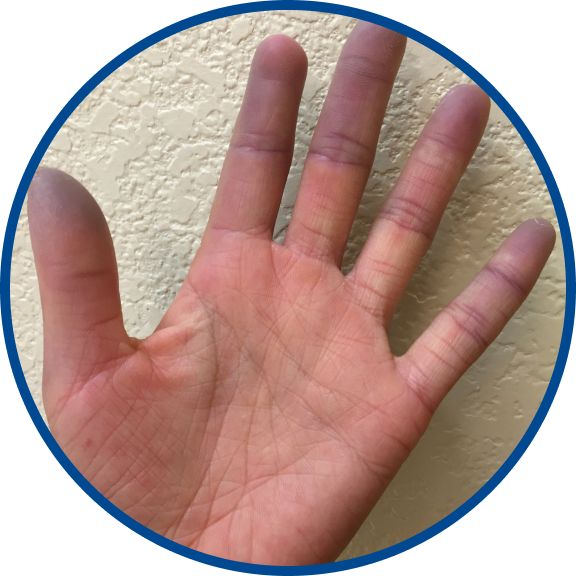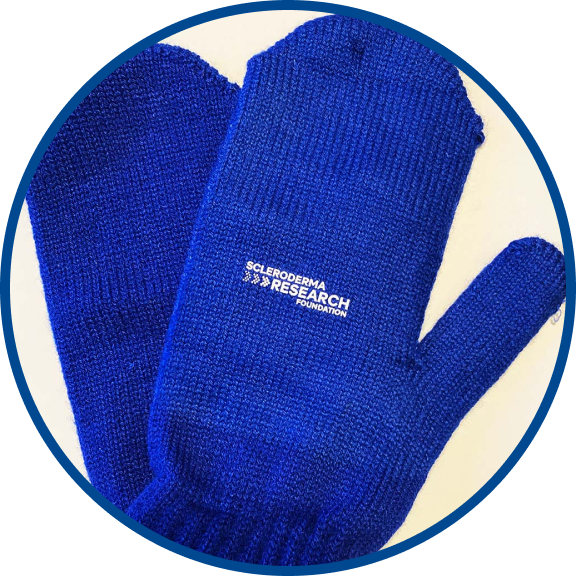![]()
Raynaud’s Phenomenon & Scleroderma: Complications and Treatments
What is Raynaud’s Phenomenon?

A person with scleroderma having a Raynaud’s attack
Raynaud’s phenomenon is a common medical condition; women are much more likely to develop Raynaud’s phenomenon than men. Most people with Raynaud’s will NOT develop scleroderma. On the other hand, nearly 90% of those with scleroderma have Raynaud’s phenomenon symptoms. For this reason, Raynaud’s symptoms are a “red flag” that can help lead to earlier diagnosis and treatment of scleroderma.
Raynaud’s phenomenon is a condition that results in decreased blood flow to your fingers and toes resulting in color changes. In this condition, excess collagen in the vessel walls narrows the blood vessels.
During an attack of Raynaud’s, your body limits blood flow to the hands and feet. This makes your fingers and toes feel cold and numb. It may also cause your fingers to turn white or blue. Once blood flow to the fingers and toes returns, they may turn red, tingle, throb, or swell and begin to hurt. An attack usually lasts a few minutes. For some people, it may last more than an hour.
What Triggers Raynaud’s Phenomenon?
Persons with Raynaud’s phenomenon should avoid exposure to cold, stress, and stressful events. They should avoid medications that constrict blood vessels. These include some treatments for migraine, menopause, and attention-deficit disorder. Other substances that constrict blood vessels include caffeine, nicotine, amphetamines, and cocaine.
How to avoid a Raynaud’s attack:
- Keep your entire body warm, not just your hands and feet
- Always bring extra layers of clothing with you
- Stash extra mittens everywhere (in the kitchen for reaching into the refrigerator or freezer, on trips to the grocery store, etc.)
- Wear hats in cold weather
- Wear mittens (not gloves) and warm socks when the temperature drops below 65 degrees. Use chemical or battery-operated hand and foot warmers
- Wear comfortable shoes and socks that allow for good circulation
- Don’t hold cold drinks
- Use a space heater in the bathroom or at your office at work
- Warm up your bed with an electric blanket, hot water bottle or use flannel sheets
- Warm up your car before you leave the house; use a remote car starter; cover your steering wheel with a lambskin wheel cover
- Try to avoid sudden changes in temperature
- Avoid stressful situations

Treatments for Raynaud’s phenomenon

Consult with your doctor or rheumatologist regarding possible treatment for Raynaud’s Phenomenon in scleroderma with medications.* Raynaud’s treatment may include:
- Calcium channel blockers, which relax and open blood vessels
- Alpha blockers which work to prevent blood vessels from constricting
- Other vasodilators, which relax blood vessels to keep them open
- Nerve surgery to interrupt the signals that control the opening and narrowing of blood vessels
- Injections of local anesthetics to block the nerves in hands and feet
*Pregnant women should not take these medications.

